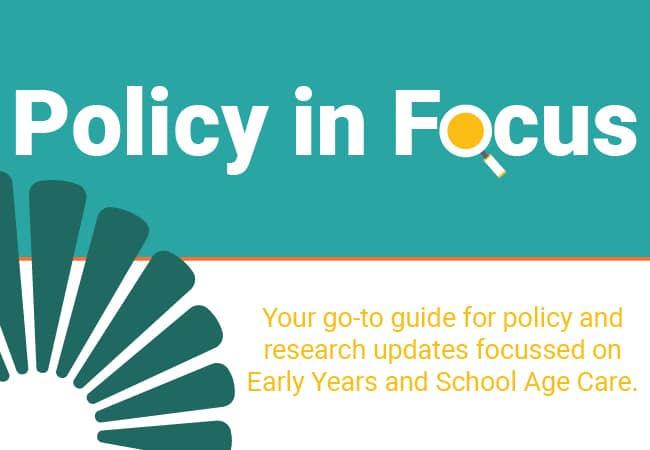Pattern
Pattern is about seeing connections and making links. It can be described as a systematic arrangement of numbers or shapes which follow a given rule1. There are patterns in time (night follows day; storytime comes after breaktime) and events (my birthday comes after Christmas), there are patterns in games (what comes next) and patterns in nature (arranging stones).
Althouse (1994) found that when children understand ‘what comes next’ in relationship to ‘what came before’ , they had no difficulty understanding and making patterns. The development of ideas about similarities and differences is complementary to understanding about numbers and their shapes and properties.2
When children understand what makes a pattern, how to copy patterns and how to make their own,this not only enhances their understanding of maths in other areas but also their experiences of art, music and physical movement.
Understanding patterns and relationships also means understanding rhythm and repetition as well as ordering from shortest to longest, smallest to largest, sorting, and categorizing.3
Through understanding patterns, children learn to make predictions, to understand what comes next, to make logical connections, and to use reasoning skills ie children learn that after a bath they will put on clean clothes/pyjamas for example.
For young children identifying and creating patterns is just the beginning of the mastery of life-long mathematical skills. Once children are aware of patterns they will begin to see them in everything. They might notice that breakfast is served in a pattern: juice, cereal and toast each day or that they have preschool one day, and stay home the next.
Identify Patterns
Help children to recognize patterns all around them and point them out; in clothes, in music, in the garden,
and everywhere patterns are to be found. Be on the lookout for patterns in clothing i.e, stripes and prints, patterns in shoe prints, nature, books, posters, art, tyre tracks, etc. Notice shoe tracks when you walk through dirt or make prints with wet soles.
Language
Think about the language you use with children when describing and creating patterns:
before, after, follow, next, start, finish, between, copy, same, different, middle, again, repeat,
Sing
Sing songs that rhyme, repeat, or have numbers in them. Songs reinforce patterns (which is a math skill as well). They also are fun ways to practice language and foster social skills like cooperation.
Make music
Use clapping, drum beats, animal noises, and various sounds to make and explore different rhythms and patterns. Also use percussion instruments to accompany singing.
Calendar
Use a calendar to talk about the date, the day of the week, and the weather. Calendars reinforce counting, sequences, and patterns.
Art Area
Create and design patterns using a different textures and materials, paint, glitter,crayons, material,buttons. Use stamps or toys to create patterns ie dinosaur feet dipped in paint. String beads into a patterned necklace or for a mobile, kite tail, string curtain.Start sequences for others to copy/continue.
Mark Making
Describe and make line patterns on paper and in sand, using language such as – lines, loops,straight,thick , thin zig zag,m,curve, out, in ,up, down
Observe patterns in the outdoors and do bark and leaf rubbings with the children!
Block Play
Use blocks, Legos or other small toys to create patterns across the room. See how long you can make it! Make structures with a pattern in the design and have pictures of buildings with examples of this.
Sand Patterns
Use rakes, buckets,pebbles, feathers, shells and flags for children to make their own repeating pattern and ask them to describe it.
Get Moving
Create movement patterns as you move across the back yard, down the street or through the park. For example walk, walk, jump; walk, walk, jump. Or make up dances that use a repeated sequence.
Go Outside
Recognise, explore and create patterns, shapes and colours, eg with leaves, pebbles and 2D shapes; Nature provides patterns in flower petals, colorful gardens, and even in the coats of animals such as tigers and zebras at the zoo. Help children to grow plants in the garden and point out the cyclical pattern of planting, growing, and dying etc.
Or you can visit your back garden/local garden and show children how to make bark rubbings!
Cooking
Create different patterns on the icing of cakes and biscuits
Think about:
-
How do we encourage children to explore patterns?
-
What opportunities do I provide for children to investigate mathematical similarities, differences and patterns in their lives?
-
How do we encourage children to move confidently in space and perform different movement patterns with growing spatial awareness?
-
What opportunities do we give children to experiment with word, language, number and shape patterns?
-
How do we encourage children to explore patterns using their senses?
-
How do we assist children to use pattern making and pattern continuation for problem solving and investigation?
-
How do we encourage children to use patterns to generate mathematical ideas?
-
In what ways do we provide opportunities for children to reflect upon their mathematical pattern making?
Links to Aistear:
Exploring and Thinking:
Aim 2 Children will develop and use skills and strategies for observing, questioning, investigating, understanding, negotiating, and problem-solving, and come to see themselves as explorers and thinkers: – In partnership with the adult, children will:
1. recognise patterns and make connections and associations between new learning and what they already know
1 & 2 Montague-Smith,Ann.Mathematics in Nursery Education.London:David Fulton Publishers, 2nd ed.2003
3 http://www.zerotothree.org/child-development/early-development/supporting-early-math-skills.html
http://www.nurseryworld.co.uk/news/1147976/Enabling-Environments-Mathematics
4 http://www.education.com/magazine/article/preschool-math/









